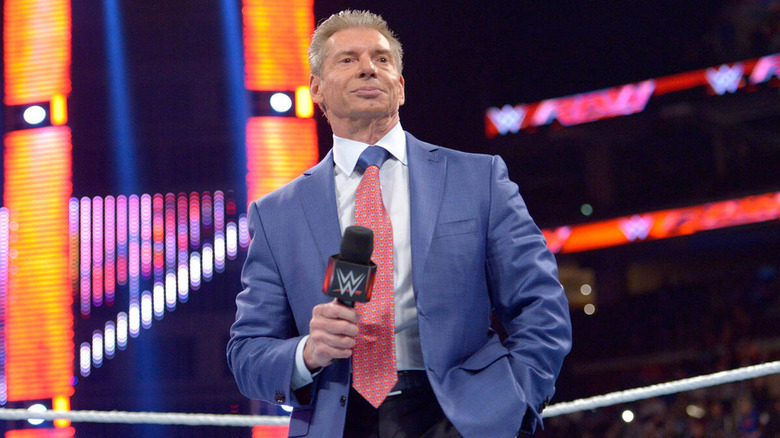ARTICLE AD

WWE
Across the span of wrestling history, cinematic matches are a relatively new concept. Although WWE has experimented with cinematic presentations going as far back as the '90s, Matt Hardy is often credited — even by current head of creative Paul "Triple H" Levesque himself — as taking the concept to the next level. Many fans were charmed by the campiness of 2016's "Final Deletion" match in TNA and 2018's "Ultimate Deletion" successor in WWE, but some fans were miffed when Michael Cole introduced the latter segment with an "apology for what they were about to show us."
Advertisement
"I knew that came from Vince," Hardy said on his "Extreme Life of Matt Hardy" podcast. "That was absolutely a Vince line, fed in ... they were trying to cover their a** in case it's something that didn't seem like it's up to WWE standards. [But] I felt like, give us the fairest opportunity to go out and do our thing, and let it be as greatly received as it could possibly be. I felt like it was just very counterproductive."
Hardy confessed he was hurt by that line, but understood it as a typical "Vince-ism" based on how WWE's former CEO would approach ideas that were not his own.
"It wasn't a Vince creation," Hardy said. "Because it wasn't a Vince creation, much like a WCW, it's not something that he was probably going to fully get behind. It's a concept that we got over at TNA, but now it's a WWE thing. We're trying to push it and promote it in WWE, so why be counterproductive to something you own?"
Advertisement
WWE shelved cinematic matches until WrestleMania 36, influenced heavily by the COVID-19 pandemic. That year, WWE presented two cinematic matches — Bray Wyatt versus John Cena in a "Firefly Fun House" match, and The Undertaker versus AJ Styles in a "Boneyard Match," which served as 'Taker's last "official" match.

 4 months ago
28
4 months ago
28 

